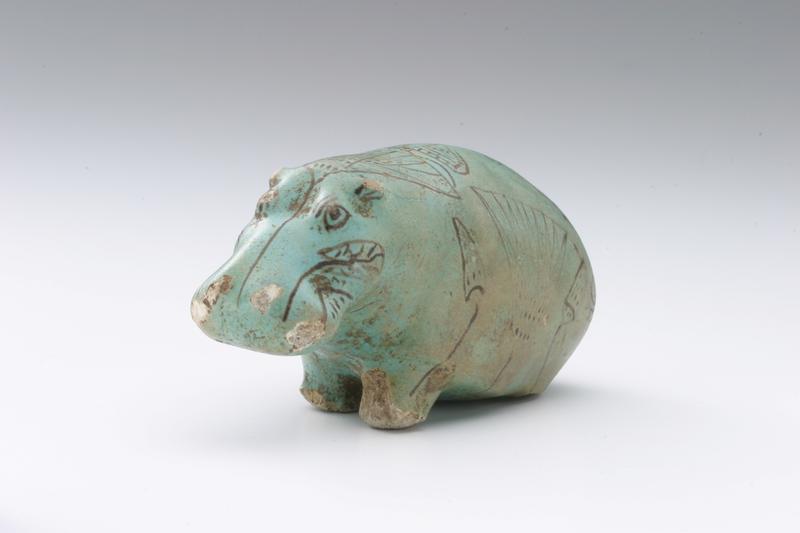河馬像
- エジプト
- 中王国時代
- 21-17c B.C.
- ファイアンス
- H-5.8 W-5
河馬像
この河馬はナイルの沼地の化身。体の四方から睡蓮が立ち上り、背中に蛙と蝶を背負う。沼地は毎年繰り返す氾濫後の生命再生の揺籃であった。河馬は本来害獣で、雌は豊饒と妊婦の守護神タウエレトに神格化された。睡蓮は言うに及ばず、蛙も蝶も復活再生の象徴し、このファイアンス像を守護獣に変身させている。しかしこれを副葬する葬儀では抜け目なくその凶暴性を削いだのか、歩む四肢がことごとく折られているのだ。
Statuette of a Hippopotamus
This hippopotamus is an embodiment of the Nile floodplain. Water lilies emerge from four sides of its body, and it bears a frog and a butterfly on its back. Every year after the floods, life was reborn in these flood plains. The hippopotamus was originally considered a harmful animal; the male was considered to be an agent of the evil god Set, but the female was deified as Taweret, guardian of fertility and pregnant women. Not only the well-known lily, but the frog and butterfly symbolised rebirth, so this faience figure has clearly been transformed into a guardian beast. However, in the ceremony where the statuette was interred with the deceased, all four limbs may have to be broken, perhaps to wisely strip the animal of its aggression.
